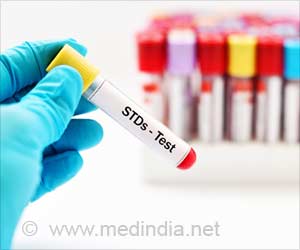Researchers have developed a computerized system to assess risk factors for Chlamydia and Neisseria gonorrhea in adolescents.

Fahd A. Ahmad, MD, and his colleagues at Washington University School of Medicine in St. Louis, developed a computerized system to assess risk factors for Chlamydia Trachomatis and Neisseria gonorrhea in adolescents. Patients were eligible to complete the survey even if they were being treated in the ED for reasons unrelated to STIs.
"We wanted to take advantage of newer technology and communication methods to achieve better health outcomes for patients visiting the ED," said Dr. Ahmad, a clinical and postdoctoral fellow in pediatric emergency medicine. “We wanted to take advantage of newer technology and communication methods to achieve better health outcomes for patients visiting the ED,”said Dr. Ahmad, a clinical and postdoctoral fellow in pediatric emergency medicine who treats patients at St. Louis Children's Hospital.
A total of 460 patients ages 15-21 years completed the survey, and the computer software provided a recommendation as to whether the adolescent should be tested for STIs based on a decision algorithm created by the research team. The recommendation and a summary of the patient's answers were integrated in the electronic medical record so that the ED doctors and nurses would have access to the information and could order any needed tests.
"When we implemented the system, we found that almost half of the patients who completed the questionnaire were in need of STI testing, and that was the same whether or not their primary complaint was related to STIs," Dr. Ahmad said.
Researchers also found that the overall rate of Chlamydia and N. gonorrhea testing in adolescents visiting the ED nearly doubled — from 8.8 percent to 15.1 percent — after the computerized survey was implemented compared with rates during the previous 15 months. Twenty percent of patients who were tested had an STI and received treatment. However, many of the patients did not receive testing as recommended for a variety of reasons.
Advertisement
"Computerized questionnaires are an efficient way for health care workers to collect clinically relevant information and integrate it into their practice," Dr. Ahmad concluded. "This type of system could be expanded to other sensitive issues such as substance abuse."
Advertisement
Source-Eurekalert















